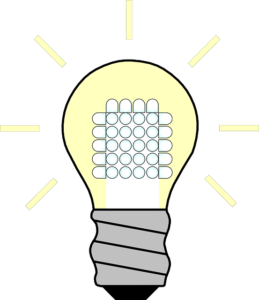
Light-emitting diode (LED) has become one of the world’s most popular lighting technologies. As the name suggests, it leverages the use of small diodes to produce light. All LED bulbs still require electricity. When powered by electricity, the diodes within them will illuminate to produce light. While you’ve probably seen or even used LED bulbs, though, you might be surprised to learn the following facts about LED technology.
#1) Projected to Account for 76% of Bulbs By 2025
To say LED bulbs are popular would be an understatement. Research, in fact, shows that LED will account for 76% of all bulbs sold by 2025. Millions of homes and businesses currently use them. You can even found LED bulbs used outdoors. LED technology is one of the leading types of indoor and outdoor lighting technologies — and it’s only expected to become more popular in the coming years.
#2) Lasts for Over 50,000 Hours
One of the reasons why LED has become such a popular lighting technology is because it lasts a long time. All bulbs can burn out. When compared to other types of bulbs, though, LEDs typically last longer. Most of them will last for over 50,000 hours. Therefore, you won’t have to replace LED bulbs as frequently as other types of bulbs.
#3) No UV Light
LED technology doesn’t involve the production of ultraviolet (UV) light. UV light is typically the result of phosphor compounds in a particular type of light bulb. LED bulbs don’t produce UV light, making them a versatile and popular choice.
#4) Energy Efficient
LED is one of the most energy-efficient lighting technologies on the market. As previously mentioned, LED bulbs require electricity. Without electricity, their diodes won’t illuminate, nor will they produce light. The good news is that LED bulbs are extremely energy efficient. LED bulbs are about 75% more energy efficient than incandescent bulbs, according to a report by the U.S. Department of Energy (DOE).
#5) Used in Backlighting
In addition to indoor and outdoor light bulbs, LED technology is often used in backlighting. Backlighting is a lighting system for a device. Keyboards, display devices, membrane switches and human machine interfaces (HMIs) often feature backlighting. LED backlighting still leveraged LED technology. Rather than large bulbs, though, LED backlighting consists of many small bulbs, which are typically placed around the perimeter of the respective device.
